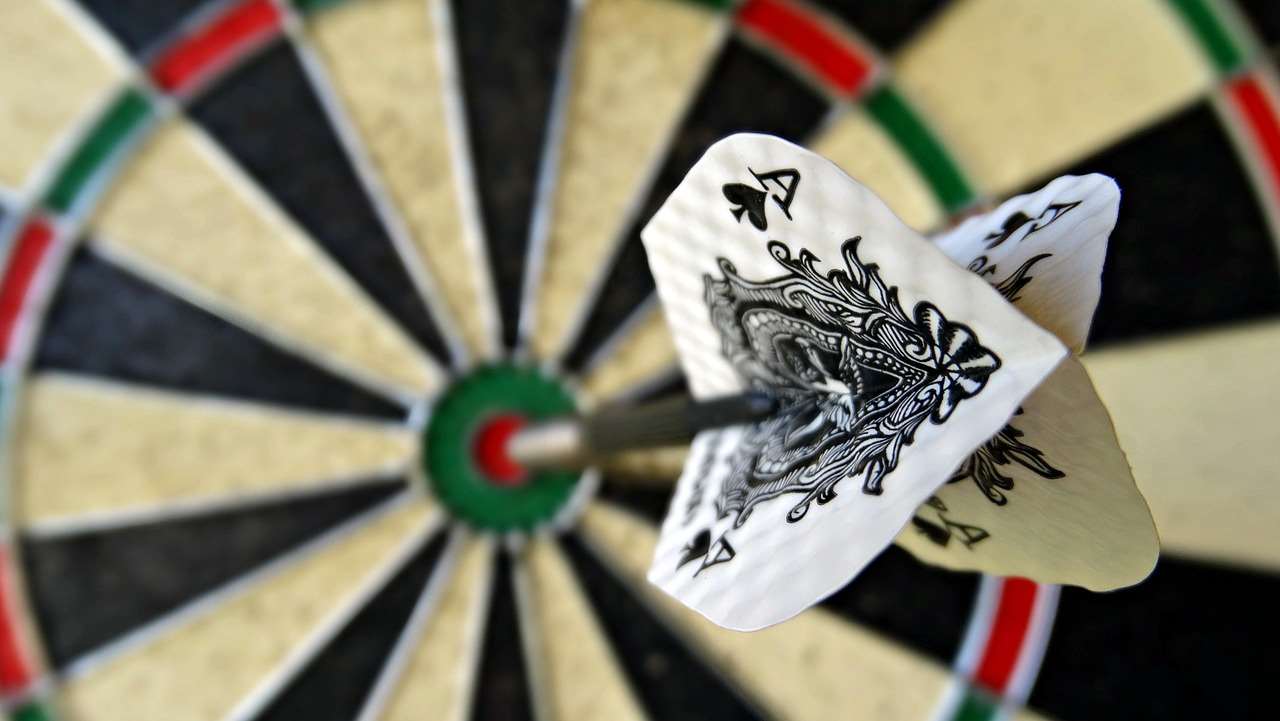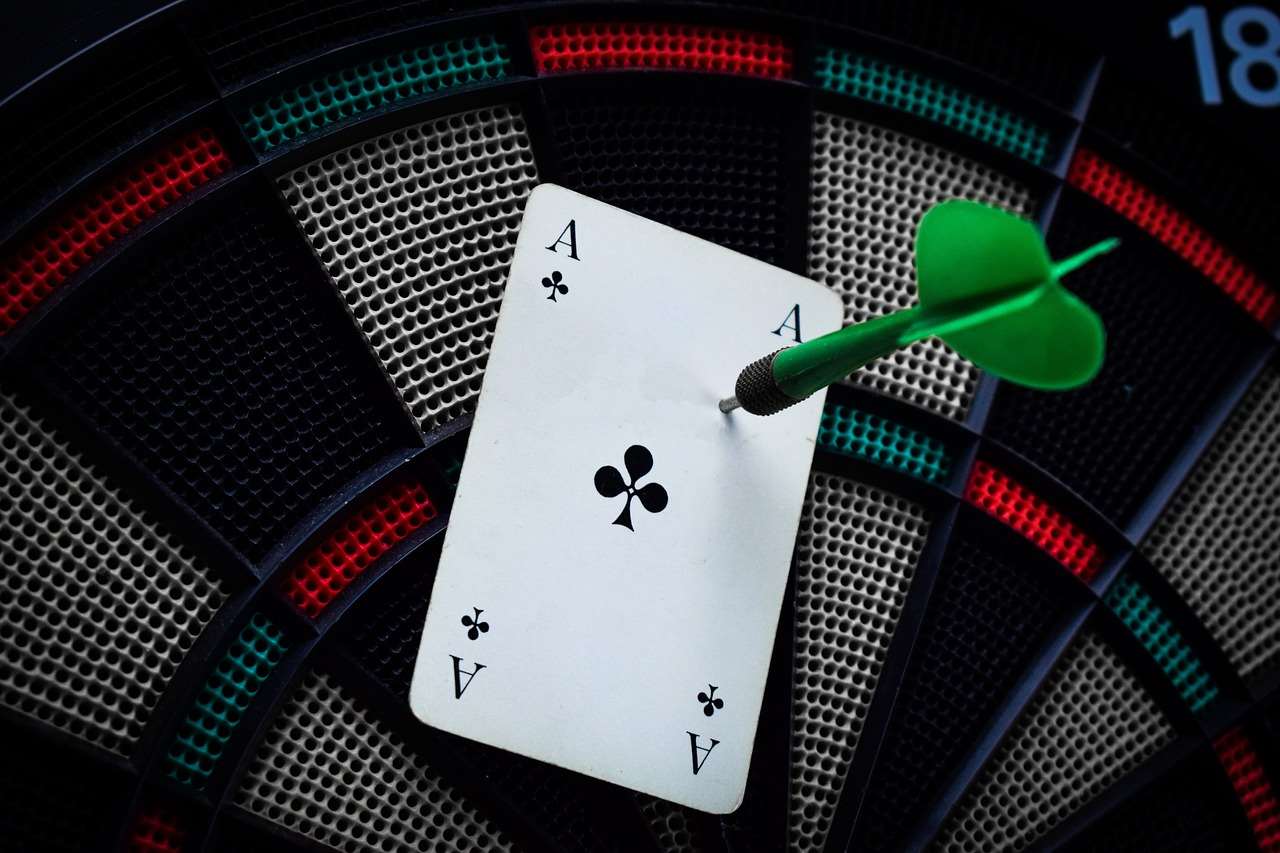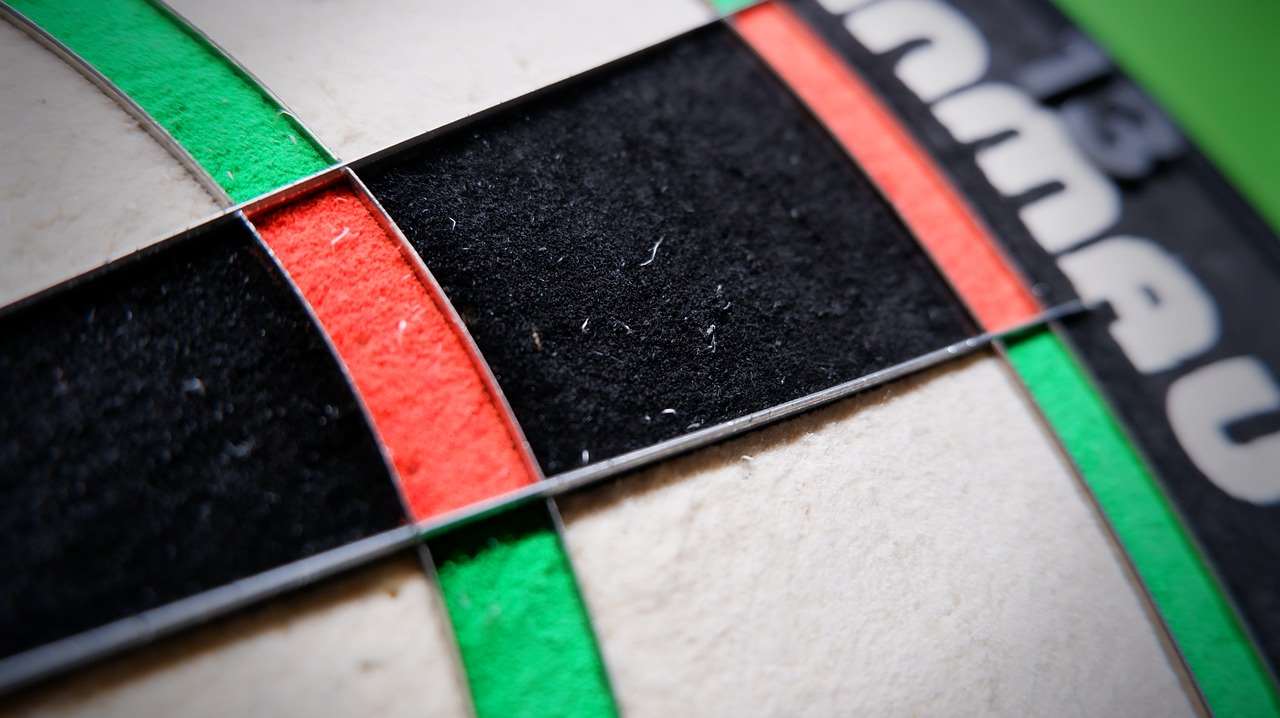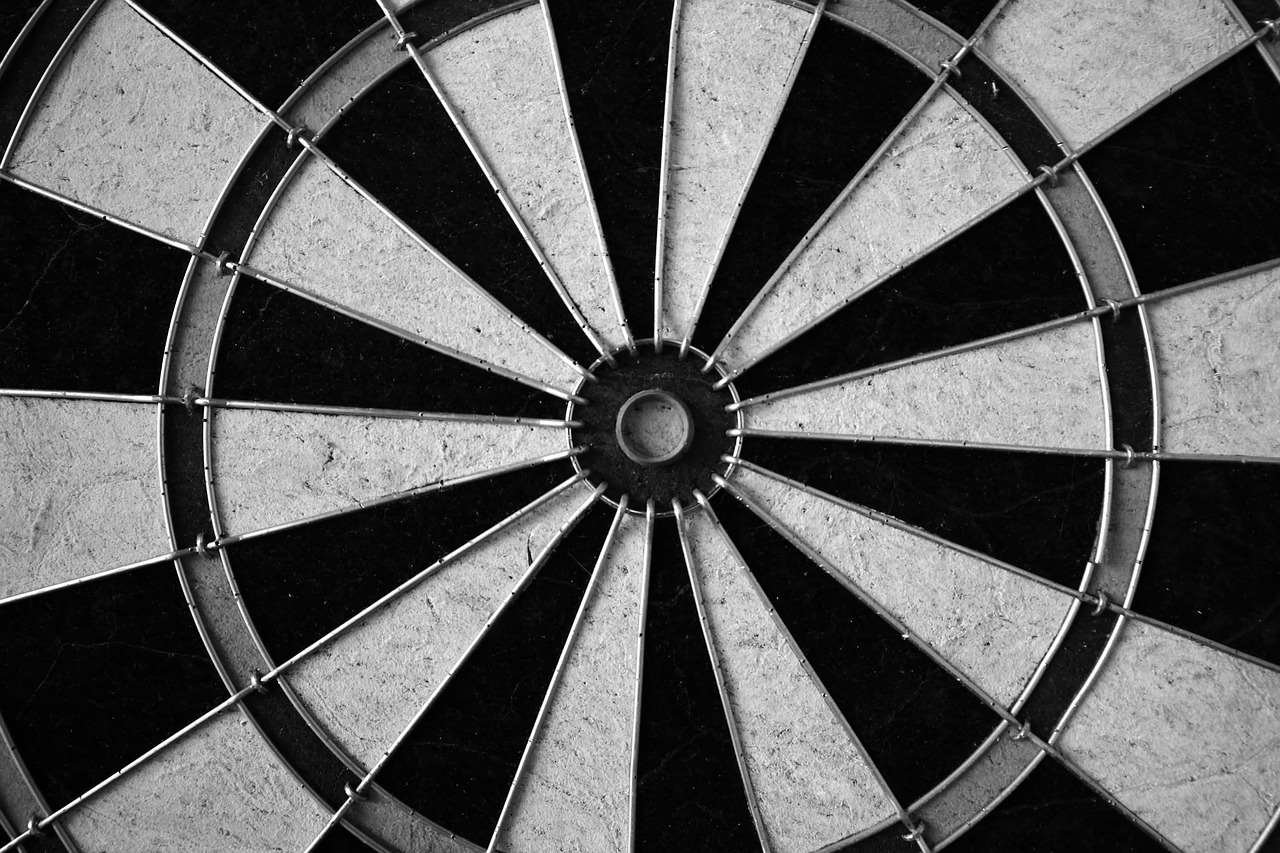Want to level the playing field in your next competition? A successful **handicap tournament case study** reveals that by carefully adjusting scores based on player ability, you can create a much more exciting and engaging event for everyone involved. This article dives into the intricacies of handicap tournaments, exploring different handicapping systems, real-world examples, and practical tips for ensuring fairness and maximizing participation.
⚠️ Still Using Pen & Paper (or a Chalkboard)?! ⚠️
Step into the future! The Dart Counter App handles all the scoring, suggests checkouts, and tracks your stats automatically. It's easier than you think!
Try the Smart Dart Counter App FREE!Ready for an upgrade? Click above!
Understanding the Concept of Handicap Tournaments
A handicap tournament is designed to allow players of varying skill levels to compete on a more even basis. The core principle involves giving less skilled players an advantage, or “handicap,” to compensate for their lower average scores. This handicap is typically a numerical adjustment to their score, allowing them to compete fairly against more experienced players. In essence, it transforms a potentially lopsided competition into a thrilling contest where anyone can win, fostering a sense of community and encouraging participation from all skill levels. This is especially useful in sports like golf, bowling, darts, or even board games.
Without a handicap system, tournaments often become dominated by the most skilled individuals, which can discourage less experienced players from participating. By implementing a well-designed handicap system, tournament organizers can create a more balanced and enjoyable experience for everyone involved. This, in turn, can lead to increased participation, greater interest in the sport or activity, and a stronger sense of community among players.
Benefits of Implementing a Handicap System
The advantages of a well-implemented handicap system extend beyond simply creating a fairer competition. Here are some key benefits:
- Increased Participation: Less skilled players are more likely to participate if they feel they have a realistic chance of winning.
- Enhanced Engagement: Closer matches create more excitement and keep players engaged throughout the tournament.
- Improved Player Development: Players of all skill levels are motivated to improve their game to reduce their handicap.
- Stronger Community: Handicap tournaments foster a sense of camaraderie and sportsmanship among players.
- Fairer Competition: Ensures that skill is not the only determinant of success, promoting a more equitable outcome.
Implementing a handicap system might seem complex initially, but the long-term benefits in terms of player satisfaction and tournament success are undeniable.

A Deep Dive into a Darts Handicap Tournament Case Study
Let’s consider a detailed **handicap tournament case study** focusing on a local darts league. The league, previously struggling with low participation rates, decided to implement a handicap system to encourage more players to join. They used a system based on each player’s average score over the previous few weeks, and the results were significant.
Prior to implementing the handicap system, the league consistently had around 12-15 participants each week, with the same few skilled players dominating the top spots. After introducing the handicap system, participation jumped to 25-30 players, with a much wider range of skill levels represented. What’s more, the matches became significantly more competitive, with upsets occurring frequently. This injected a fresh level of excitement and unpredictability into the league, leading to a more vibrant and engaging atmosphere.
The Darts Handicap System Used
The darts league implemented a relatively simple, yet effective, handicap system. Here’s how it worked:
- Data Collection: Each player’s average score over the previous three weeks was recorded.
- Handicap Calculation: The handicap was calculated by subtracting the player’s average score from a target score (e.g., 60 points per round). The difference was then multiplied by a factor (e.g., 0.8) to determine the handicap.
- Application: At the end of each game, the player’s handicap was added to their actual score to determine their final score for the tournament.
For example, if a player’s average score was 40, their handicap would be calculated as follows: (60 – 40) * 0.8 = 16. This means that 16 points would be added to their score at the end of each game.
This type of handicap system requires careful monitoring. After the first few weeks, the league organizers reviewed the handicaps and adjusted the target score and the multiplication factor to ensure the system remained fair and balanced. This iterative approach is crucial to the success of any handicap tournament.
Key Factors for a Successful Handicap Tournament
Several factors contribute to the success of a **handicap tournament**. These include:
- Choosing the Right Handicapping System: Select a system that is appropriate for the sport or activity and the skill levels of the participants.
- Accurate Data Collection: Ensure that the data used to calculate handicaps is accurate and up-to-date.
- Transparency: Clearly communicate the handicap system to all participants.
- Regular Monitoring and Adjustment: Review the handicap system regularly and make adjustments as needed to ensure fairness.
- Clear Communication: Make sure that all participants understand the rules and how the handicap is calculated. Clarity prevents disputes and keeps the focus on enjoyment.
The most important aspect is ensuring that the **tournament rules** are clearly communicated before play begins. It may also be beneficial to post the rules prominently so players can review them as needed.

Different Types of Handicapping Systems
Various handicapping systems are used across different sports and activities. Some common examples include:
- Percentage-Based Handicaps: The handicap is calculated as a percentage of the player’s score or average score.
- Fixed-Point Handicaps: A fixed number of points is added to or subtracted from a player’s score.
- Average-Based Handicaps: The handicap is based on the player’s average score over a certain period.
- Course Handicap (Golf): A number representing the difficulty of a particular golf course for a bogey golfer.
- Estimated Potential: Used in events where players don’t have past scores to assess, it involves estimating a player’s potential skill level.
The best type of handicapping system will depend on the specific sport or activity and the characteristics of the players involved. The darts league *how to make darts fairer with handicap rules* described earlier used an average-based system.
Addressing Potential Challenges in a Handicap Tournament
While handicap tournaments offer many benefits, they can also present some challenges. Common issues include:
- Sandbagging: Players intentionally underperforming to obtain a higher handicap.
- Handicap Inflation: Players’ handicaps increasing over time due to improvement in skill.
- Complexity: Some handicapping systems can be complex and difficult for players to understand.
- Complaints: Players may complain about the fairness of the handicap system.
To mitigate these challenges, it is important to implement safeguards such as:
- Monitoring Player Performance: Closely monitor players’ scores to detect potential sandbagging.
- Regular Handicap Adjustments: Adjust handicaps regularly to reflect changes in player skill.
- Simplified Handicapping Systems: Use a handicapping system that is easy to understand.
- Open Communication: Encourage players to provide feedback and address any concerns promptly.
For example, the darts league in our **handicap tournament case study** addressed potential sandbagging by reviewing players’ performances after each tournament and adjusting handicaps accordingly. They also simplified their handicapping system by providing clear explanations and examples to all participants.

Real-World Examples: Handicap Tournaments in Various Sports
Handicap tournaments are widely used across various sports and activities. Here are some examples:
- Golf: Handicap tournaments are a staple of golf, allowing players of all skill levels to compete for prizes.
- Bowling: Bowling leagues and tournaments often use handicap systems to level the playing field.
- Darts: As demonstrated in our **handicap tournament case study**, darts leagues and tournaments frequently utilize handicap systems.
- Pool/Billiards: Similar to darts, handicap systems are essential in pool and billiards to ensure fair competition.
- Chess: In chess, handicaps can involve removing pieces or giving a time advantage to the weaker player.
Each sport or activity has its own unique way of implementing handicap systems. The key is to find a system that is appropriate for the specific game and the skill levels of the players involved. *Adapting darts rules for beginners* might be a helpful starting point for exploring handicapping within the realm of darts.
Leveraging Technology to Manage Handicap Tournaments
Modern technology can greatly simplify the management of handicap tournaments. Software and apps are available to:
- Calculate Handicaps Automatically: Eliminates the need for manual calculations.
- Track Player Performance: Provides detailed statistics on player performance.
- Generate Tournament Brackets: Automatically creates tournament brackets based on player handicaps.
- Communicate with Participants: Sends updates and announcements to participants via email or text message.
By leveraging technology, tournament organizers can save time and effort, reduce errors, and improve the overall experience for participants.

Best Practices for Organizing a Handicap Tournament
To ensure the success of your **handicap tournament**, consider these best practices:
- Plan Ahead: Develop a detailed plan that outlines the tournament format, rules, and handicap system.
- Communicate Clearly: Clearly communicate the rules and handicap system to all participants.
- Be Fair and Consistent: Apply the rules and handicap system fairly and consistently.
- Gather Feedback: Solicit feedback from participants to identify areas for improvement.
- Promote Sportsmanship: Encourage sportsmanship and fair play among participants.
By following these best practices, you can create a fun and engaging handicap tournament that is enjoyed by all participants.
The Future of Handicap Tournaments
Handicap tournaments are likely to remain a popular way to promote participation and engagement in various sports and activities. As technology continues to evolve, we can expect to see even more sophisticated and user-friendly handicapping systems emerge. The integration of AI and machine learning could lead to more accurate and dynamic handicaps that adjust in real-time based on player performance. This could further level the playing field and create even more exciting and unpredictable competitions.

Handicap tournament case study: Lessons Learned
Our **handicap tournament case study** involving the darts league highlights the transformative power of a well-designed handicap system. The increase in participation, enhanced engagement, and improved player development demonstrate the benefits of leveling the playing field. By carefully considering the factors discussed in this article, tournament organizers can create a more inclusive and enjoyable experience for all participants.
Conclusion
A strategically implemented **handicap tournament case study** shows how to successfully create fair and engaging competitions. By choosing the right handicapping system, collecting accurate data, communicating clearly, and regularly monitoring and adjusting the system, you can maximize participation, enhance engagement, and foster a stronger sense of community. Remember to address potential challenges proactively and leverage technology to streamline the management of your tournament. Implement these strategies, and you’ll be well on your way to hosting a memorable and successful event. Take the first step today and start planning your next **handicap tournament**! Explore *Basic Darts Fundamentals for Beginners* for helpful tips.
Hi, I’m Dieter, and I created Dartcounter (Dartcounterapp.com). My motivation wasn’t being a darts expert – quite the opposite! When I first started playing, I loved the game but found keeping accurate scores and tracking stats difficult and distracting.
I figured I couldn’t be the only one struggling with this. So, I decided to build a solution: an easy-to-use application that everyone, no matter their experience level, could use to manage scoring effortlessly.
My goal for Dartcounter was simple: let the app handle the numbers – the scoring, the averages, the stats, even checkout suggestions – so players could focus purely on their throw and enjoying the game. It began as a way to solve my own beginner’s problem, and I’m thrilled it has grown into a helpful tool for the wider darts community.